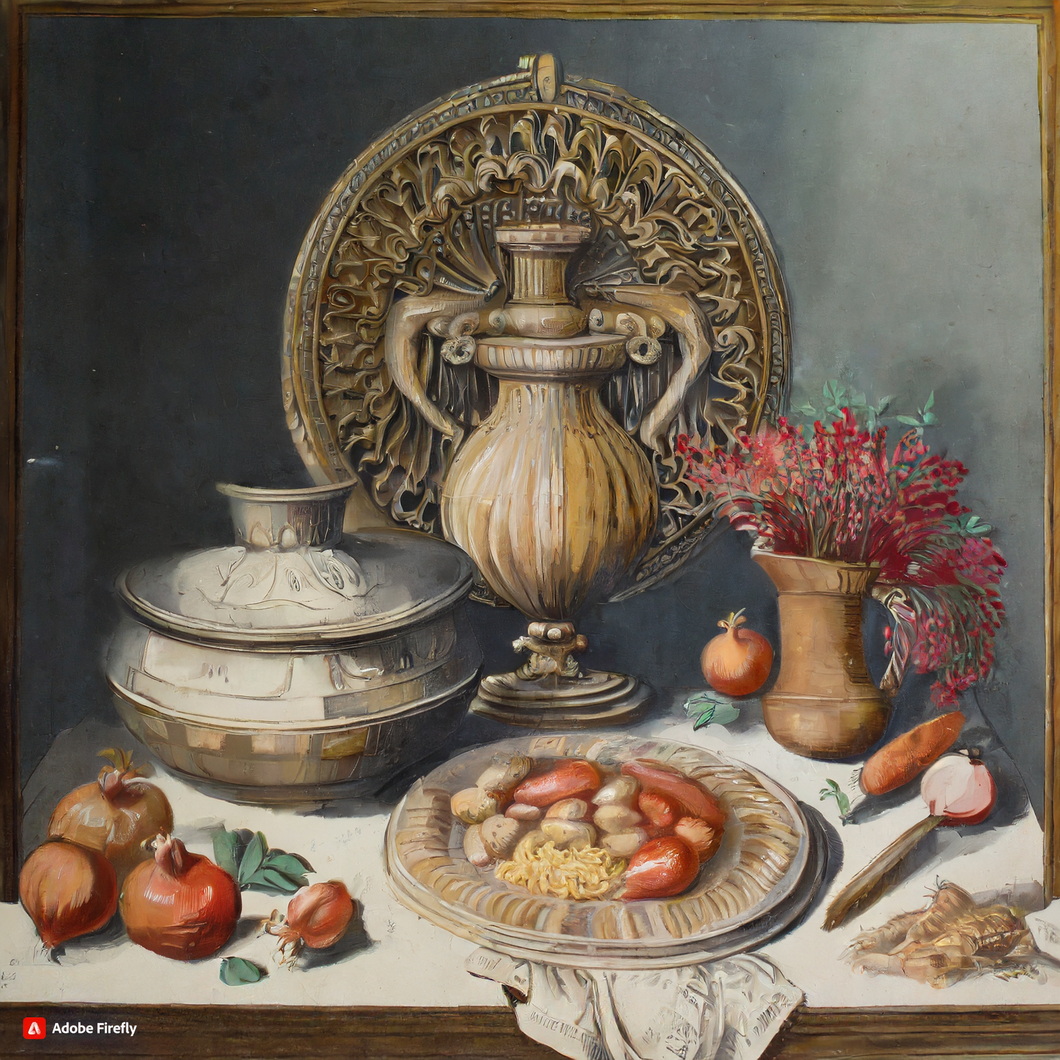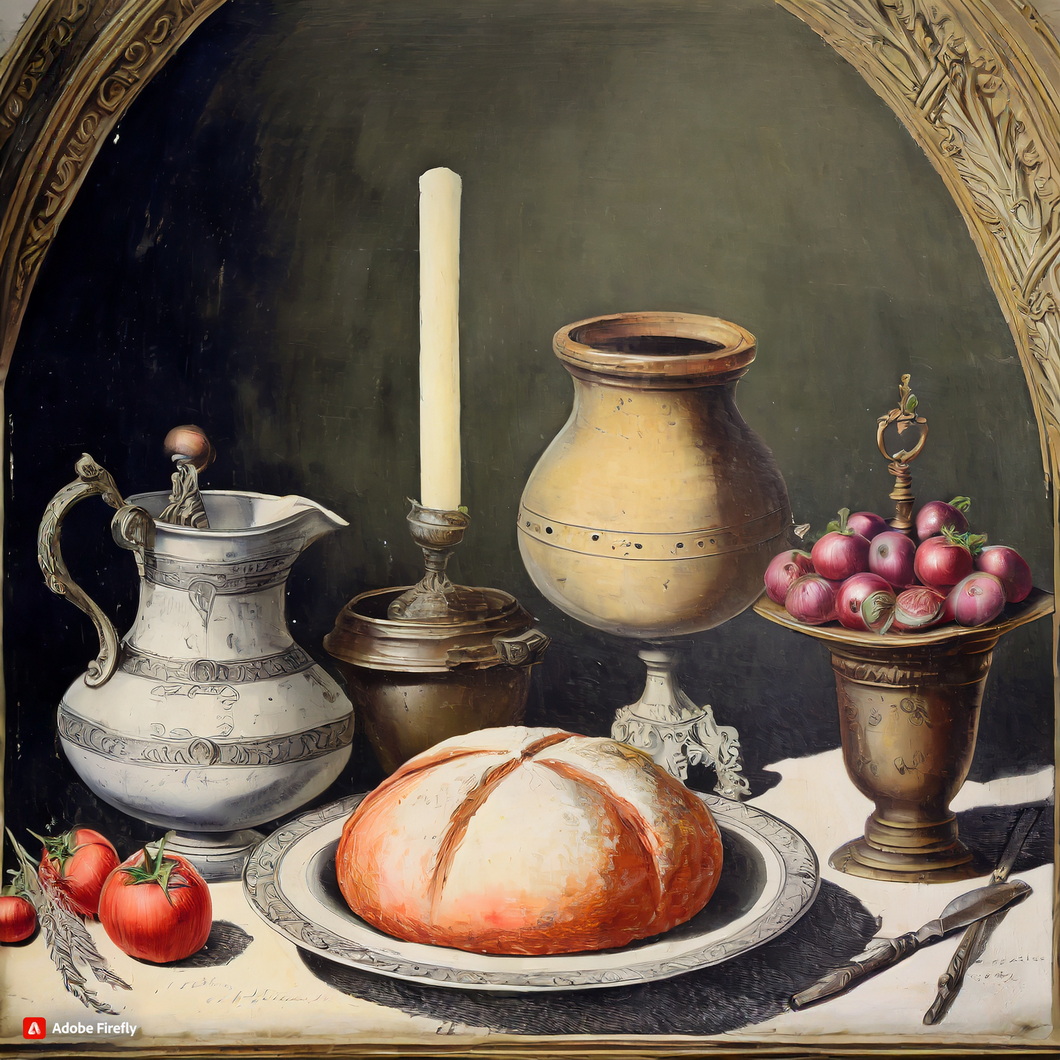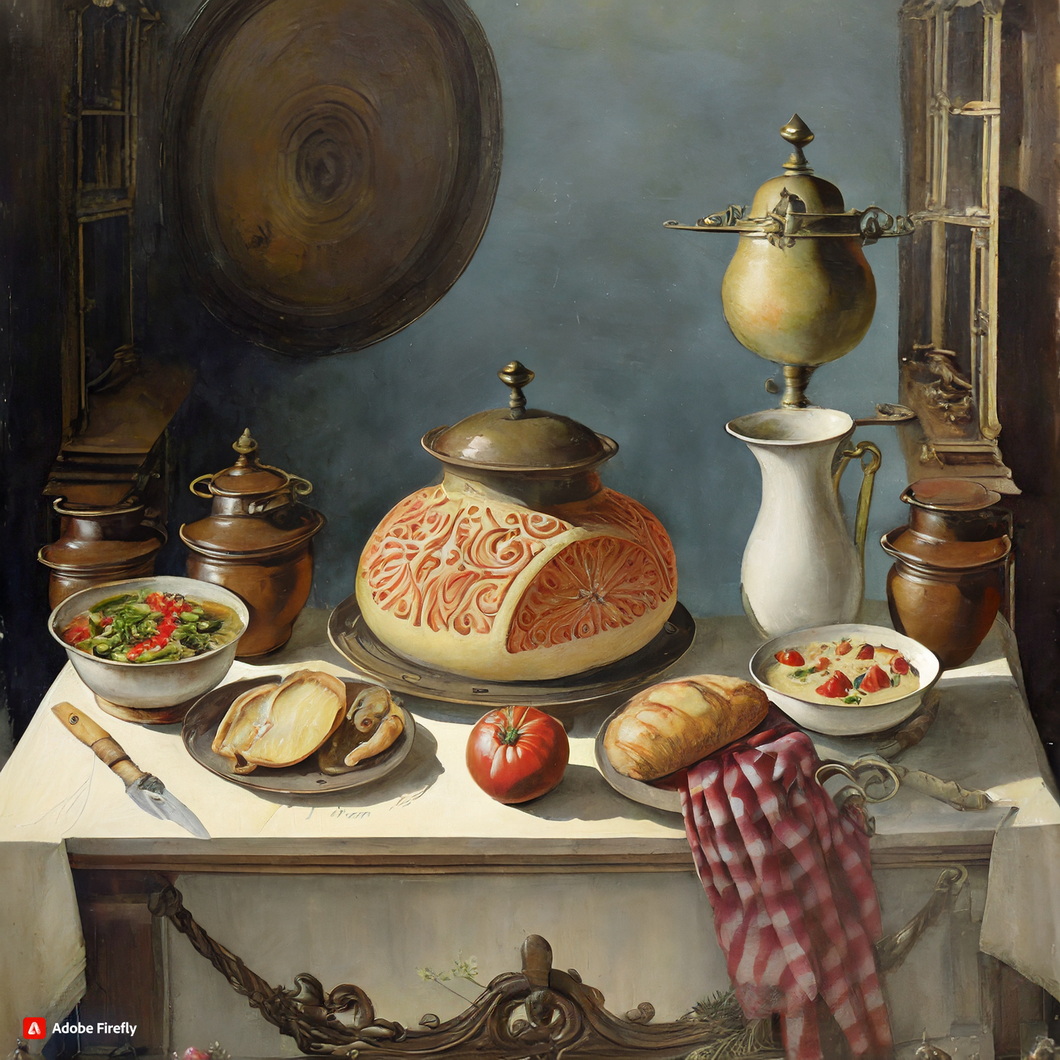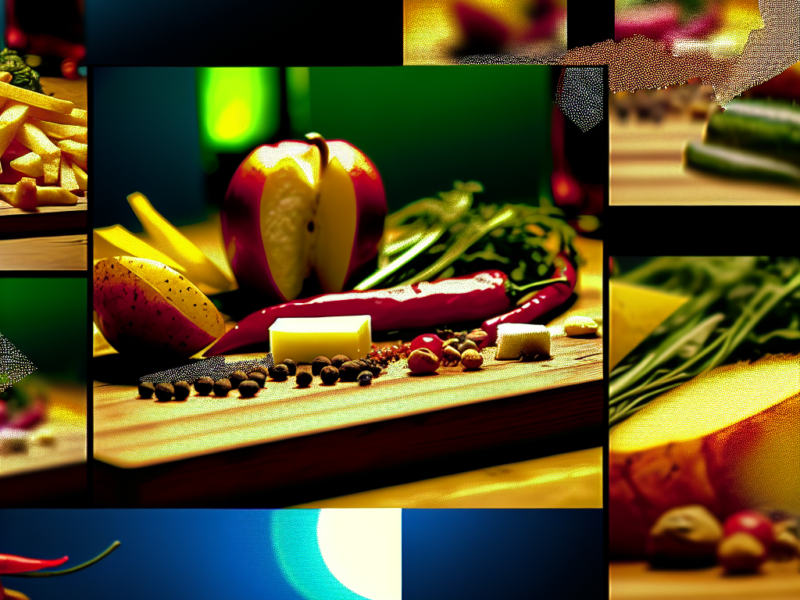Introduction
Art on a Plate is a fascinating exploration of the intersection between art and food. It delves into the rich history and symbolism behind the creation of Food art, revealing the deeper meanings and cultural significance behind these edible masterpieces. From ancient civilizations to modern times, food has been used as a medium for artistic expression, and this book uncovers the hidden stories and messages behind each dish. Join us as we unravel the historical symbolism in Food art and discover the beauty and complexity of this unique form of art.
Exploring the Cultural Significance of Food Art: A Historical Perspective
Food has always been an integral part of human culture. It not only nourishes our bodies but also holds a significant place in our traditions, customs, and beliefs. Throughout history, food has been used as a medium for artistic expression, with its own unique symbolism and meaning. From ancient civilizations to modern times, Food art has played a crucial role in reflecting the cultural values and beliefs of a society.
In ancient civilizations, food was not just a means of sustenance but also a way to communicate with the gods. The Egyptians, for example, believed that the gods would be pleased with offerings of food and drink. This led to the creation of elaborate Food art, such as the famous hieroglyphic carvings on the walls of tombs and temples. These carvings depicted various food items, such as bread, fruits, and vegetables, which were believed to provide sustenance to the deceased in the afterlife.

Similarly, in ancient Greece, food was an essential part of religious ceremonies and festivals. The Greeks believed that certain foods were sacred and had the power to bring good luck and prosperity. As a result, Food art became a way to honor the gods and express gratitude for their blessings. The famous Greek symposium, a gathering of men to discuss philosophy and politics, was also a place where Food art was highly valued. Elaborate dishes were prepared and presented in a visually appealing manner, reflecting the wealth and status of the host.
Moving on to the Middle Ages, Food art took on a new form with the rise of Christianity. The Last Supper, a famous painting by Leonardo da Vinci, is a prime example of how food was used to convey religious symbolism. The bread and wine on the table represent the body and blood of Christ, making it a powerful representation of the Christian faith. Food art also played a significant role in religious festivals and celebrations, with dishes being prepared to represent biblical stories and events.
During the Renaissance period, Food art became more refined and elaborate. Banquets and feasts were a way for the wealthy to display their wealth and power, and food was used as a medium for artistic expression. The French court, in particular, was known for its extravagant feasts, where food was presented in intricate and elaborate designs. These feasts were not just about indulging in delicious food, but also about showcasing the host’s social status and sophistication.

In the 17th and 18th centuries, Food art took on a political and social significance. In France, during the reign of Louis XIV, food was used as a way to display the king’s power and wealth. The famous dessert course, known as the pièce montée, was a grand display of sugar sculptures and elaborate designs, often depicting scenes from mythology or historical events. This was also a way for the king to showcase the country’s economic prosperity, as sugar was an expensive and rare commodity at the time.
In modern times, Food art has evolved into a form of social commentary and cultural expression. With the rise of globalization, food has become a way to explore and celebrate different cultures. Food art has also become a way to address social and political issues, with artists using food as a medium to convey powerful messages. For example, the artist Vik Muniz created a series of portraits using food waste to raise awareness about food waste and its impact on the environment. Read Breakfast Ideas for Weight Loss.
In conclusion, Food art has a rich and diverse history, reflecting the cultural values and beliefs of different societies throughout time. From religious symbolism to social commentary, food has been used as a medium for artistic expression, showcasing the creativity and ingenuity of human beings. So the next time you see a beautifully presented dish, remember that it is not just about satisfying your taste buds, but also about unraveling the historical symbolism and cultural significance behind it.
From Religious Rituals to Political Statements: Decoding Symbolism in Food Art
Food has always been an integral part of human culture and history. It not only serves as a source of sustenance but also holds significant cultural and symbolic meanings. Throughout history, food has been used as a medium for artistic expression, with artists using it to convey powerful messages and make political statements. From religious rituals to political protests, Food art has been a way for artists to unravel the deeper meanings behind the food we consume.

One of the earliest forms of Food art can be traced back to religious rituals. In ancient civilizations, food was often used as an offering to the gods. These offerings were not just about providing sustenance to the deities, but also held symbolic meanings. For example, in ancient Egypt, bread was offered to the gods as a symbol of life and fertility. Similarly, in ancient Greece, honey was used as an offering to the gods as a symbol of sweetness and abundance. Read Lunch for Weight Loss.
As civilizations evolved, so did the use of food in art. During the Renaissance period, artists began incorporating food into their paintings as a way to add depth and symbolism to their work. One of the most famous examples of this is Leonardo da Vinci’s “The Last Supper,” which depicts the biblical scene of Jesus and his disciples sharing a meal. The food in the painting, such as the bread and wine, holds significant religious symbolism, representing the body and blood of Christ.
Food art also played a crucial role in political statements throughout history. During times of war and political unrest, food was often used as a way to protest and make a statement. In the 18th century, French artist Jean-Francois Millet created a series of paintings called “The Gleaners,” which depicted women collecting leftover grains from a field. This painting was a commentary on the social and economic inequalities of the time, with the women representing the lower class and the grains symbolizing the wealth and excess of the upper class.

In more recent times, Food art has been used as a way to raise awareness about social and environmental issues. In 2015, Chinese artist Ai Weiwei created a series of photographs called “Dropping a Han Dynasty Urn,” where he is seen dropping and smashing a 2,000-year-old urn. This act was a powerful statement on the destruction of cultural heritage and the disregard for history in modern society.
Food art has also been used as a way to challenge societal norms and push boundaries. In the 1960s, artist Piero Manzoni created a piece called “Artist’s Shit,” where he canned his own feces and labeled them as art. This provocative piece was a commentary on the commodification of art and the absurdity of the art market. Read easy Healthy Lunch for Weight Loss.
Food art has also been used as a way to celebrate and preserve cultural traditions. In many cultures, food is an essential part of celebrations and rituals. In India, the festival of Holi is celebrated by throwing colored powders and water at each other. This tradition has been captured in the work of Indian artist Sudarshan Shetty, who created a series of photographs called “Holi,” where he captures the vibrant colors and chaos of the festival.
In conclusion, Food art has been a way for artists to unravel the deeper meanings behind the food we consume. From religious rituals to political statements, food has been used as a medium for artistic expression throughout history. It continues to be a powerful tool for artists to challenge societal norms, raise awareness about important issues, and celebrate cultural traditions. So the next time you sit down for a meal, take a moment to appreciate the art on your plate and the rich history and symbolism behind it.
Q&A
Q: What is Food art?
A: Food art is a form of artistic expression that involves creating visually appealing and aesthetically pleasing dishes using various ingredients and techniques. It combines the elements of food and art to create a unique and often symbolic representation of culture, history, and personal expression.
Conclusion
In conclusion, Art on a Plate is a fascinating exploration of the historical symbolism embedded in Food art. Through the use of various artistic techniques and mediums, food has been used to convey cultural, political, and social messages throughout history. By unraveling these hidden meanings, we gain a deeper understanding of the significance of food in our society and its role in shaping our perceptions and beliefs.
Food art not only serves as a visual feast, but also as a powerful tool for storytelling and cultural expression. It is a testament to the enduring impact of food on our lives and the rich history behind every dish.
Please follow us on linkedin. You can learn all best canadian food recipes you can check our Culinary 1TouchFood Youtube and Telegram 1TouchFood page. Don’t forget Fighting Obesity Magazine and Radio Cooking.

